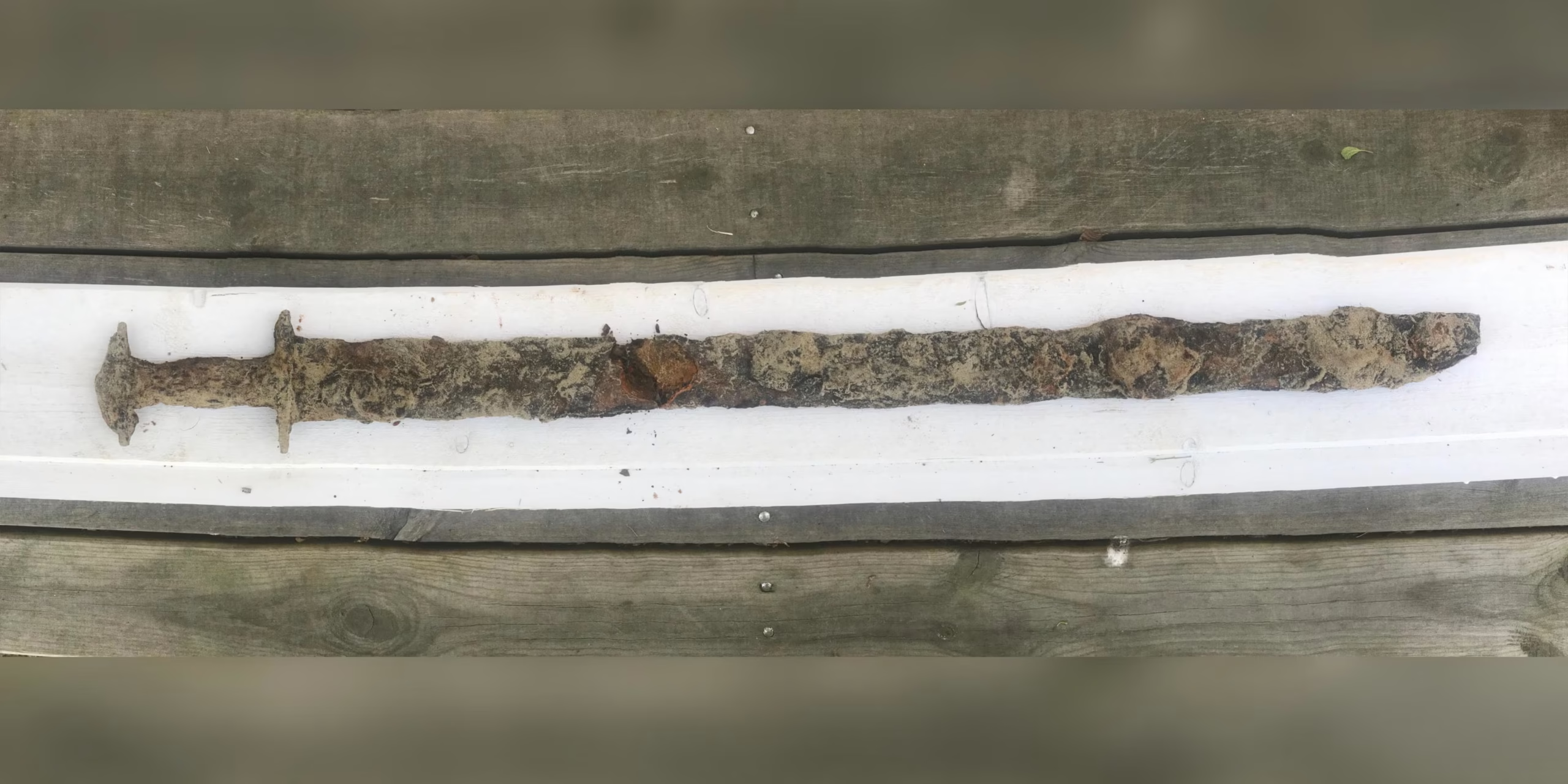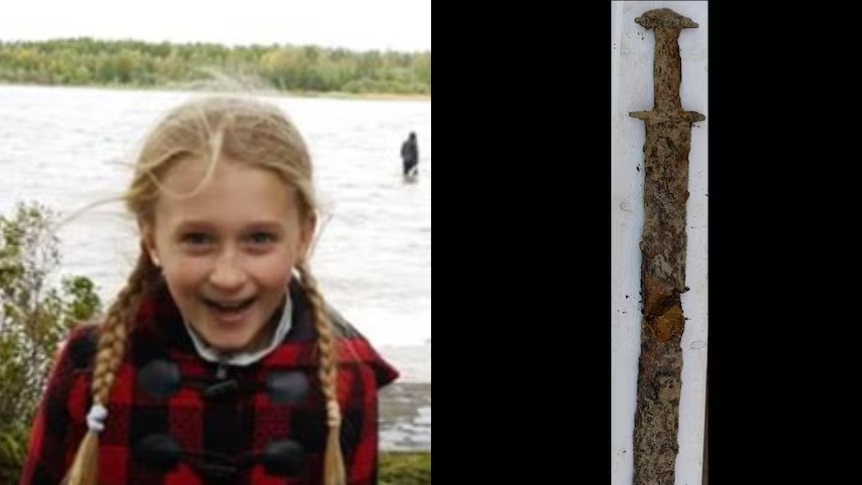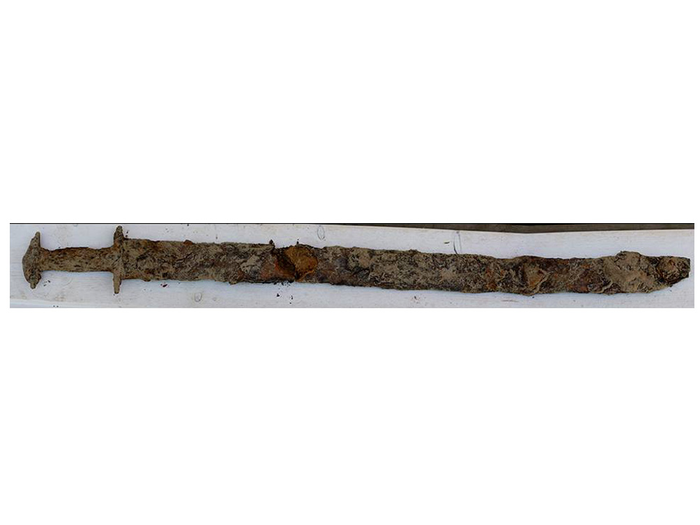8-Year-Old Girl Pulls 1,000-Year-Old Sword from Lake: A Modern Tale from the Depths of History

In a scene that seemed torn straight from the pages of Arthurian legend, an 8-year-old Swedish girl named Saga Vanecek made international headlines in 2018 when she discovered a 1,000-year-old Viking-era sword in the waters of a lake. The find not only thrilled archaeologists and history buffs alike but also ignited the public imagination with its fairy tale-like narrative—a child, a sword, and a mysterious past.
This remarkable discovery unfolded as a chance event, but its implications reach deep into the historical, archaeological, and cultural fabric of Scandinavia. Here is the full story—one that intertwines the serendipity of childhood curiosity with the mysteries of ancient weaponry and the legacy of the Vikings.
The Discovery: A Day at the Lake
In the summer of 2018, young Saga Vanecek was playing in the shallow waters of Vidöstern Lake, near her family’s summer home in Tånnö, southern Sweden. The lake’s water level had dropped due to an unusually dry season, revealing stretches of lakebed usually submerged. While exploring the muddy shallows, she reached down and pulled out what she initially thought was a stick or old toy.
Instead, it turned out to be something much more extraordinary: a well-preserved iron sword, complete with a wooden and leather-bound hilt, heavily corroded but clearly ancient.
Saga’s family reported the find to local authorities, who quickly contacted archaeologists from the Jönköping County Museum. Upon examination, experts confirmed the sword dated to at least the 5th to 6th century CE, potentially older than the Viking Age, which typically begins around 793 CE. Some estimates placed it closer to 1,500 years old.
Why the Sword Is So Significant
Finding an ancient weapon isn’t entirely unheard of in Scandinavia, but finding it so well-preserved—and by a child—was exceptionally rare.
Key Details:
- The sword is approximately 85 centimeters (about 33 inches) long.
- It is made primarily of iron, with visible remains of organic material like wood and leather.
- Its design suggests pre-Viking or early-Viking craftsmanship—likely dating from the Iron Age or early Migration Period.
Experts suggest the sword was deliberately deposited in the lake, possibly as a ritual offering. Such practices were common in ancient Scandinavia, where weapons, tools, and even boats were sacrificed to water deities.

The Legend-Like Story Spreads Worldwide
When news broke, media outlets around the world leapt on the story. Headlines proclaimed:
- “Girl Pulls Ancient Sword from Swedish Lake, Archeologists Amazed”
- “Real-Life Excalibur? 8-Year-Old Finds Sword in Lake”
- “Swedish Girl Discovers Sword in Lake, Declared Queen by Internet”
Social media erupted with jokes and fanfare, dubbing Saga the “Queen of Sweden”, likening her to King Arthur, and creating illustrations of her wielding the sword with regal poise.
Saga herself responded with humility and good humor. In interviews, she said she thought it was “cool” but was initially unsure why people made such a big fuss.
The Ongoing Excavation and Finds
Following Saga’s discovery, archaeologists conducted further searches in the lake area. To their surprise, they uncovered more ancient items, including:
- A brooch believed to be from the Iron Age
- Pieces of textile, indicating human presence or burial
- Possibly other weapon fragments or ritual objects
These finds suggest that the site might have been a ritual deposition area or even a previously undocumented settlement or battleground. Research is ongoing, and the area is now considered archaeologically sensitive.
Historical Context: Why Are There Swords in Lakes?
In ancient Northern European cultures, particularly among the Celts and Germanic tribes (including the ancestors of the Vikings), it was common to offer weapons to the gods by placing them in lakes, rivers, or bogs.
This practice symbolized:
- A tribute to war gods like Týr or Odin
- A marking of a warrior’s death or victory
- A spiritual offering for peace, fertility, or prosperity
Many other similar finds across Denmark, Germany, and Sweden have unearthed spears, swords, and shields in wetlands—often with evidence of ritual destruction or careful placement.
The Sword Today: Where Is It Now?
The sword was sent to the Jönköping County Museum for conservation and preservation, a process that could take years. Iron artifacts require controlled desalination and stabilization to prevent decay once they’re removed from their burial environment.
Once preserved, the sword is expected to be displayed at a Swedish museum, possibly alongside a tribute to Saga herself and the extraordinary role she played in rediscovering history.
Cultural Impact and Public Fascination
Saga’s discovery resonates on many levels:
- Childlike wonder meets ancient mystery – The story evokes a timeless fascination with hidden treasures and heroic origins.
- Reviving interest in archaeology – It sparked new interest in Viking and Iron Age history among young people and students.
- Female empowerment – As a girl discovering a sword, the narrative subverted gendered expectations about warriors and history.
- Internet storytelling – The viral nature of the news shows how quickly a single find can capture global imagination.
Saga herself became a minor celebrity in Sweden, even featured in children’s books and educational programs about archaeology and history.

Conclusion: One Sword, Many Stories
What started as a simple summer outing became a portal to the past. Saga Vanecek’s accidental discovery didn’t just pull a sword from the mud—it pulled a forgotten piece of history back into the light.
It reminded the world that ancient artifacts lie hidden not only beneath layers of soil and water but also within the reach of those curious enough to explore. Sometimes, it takes the eyes of a child to see what others overlook.
And though she never asked to be a queen, Saga now reigns in a different realm—the kingdom of curiosity, wonder, and legend.




